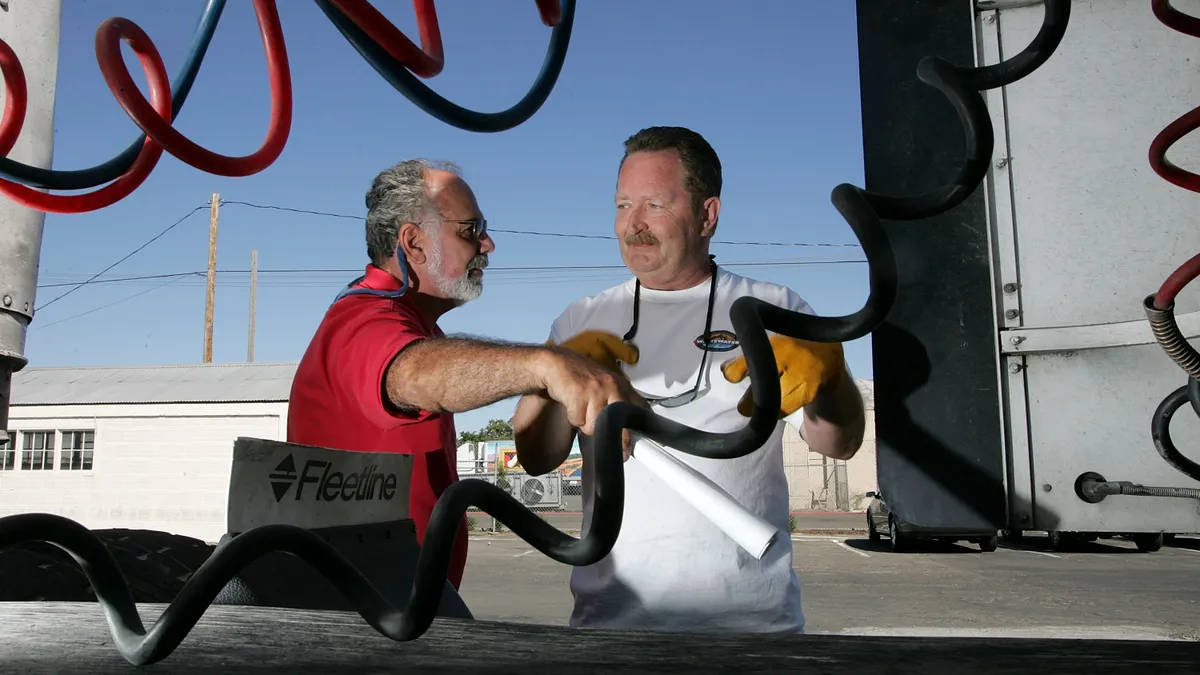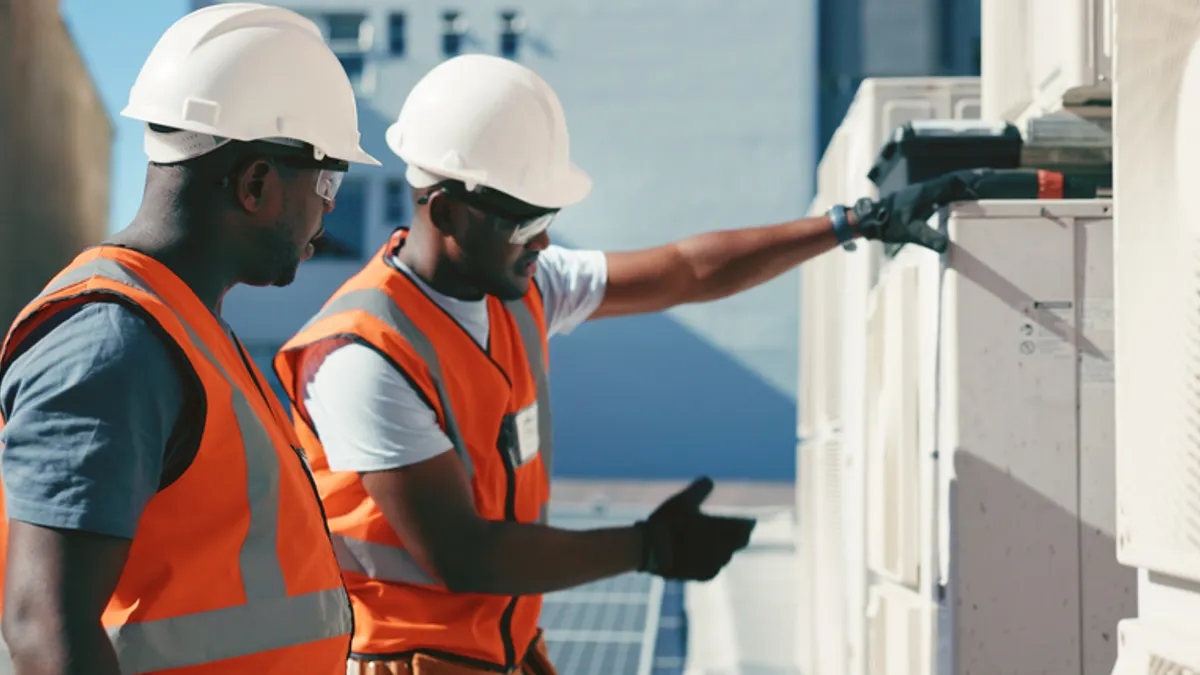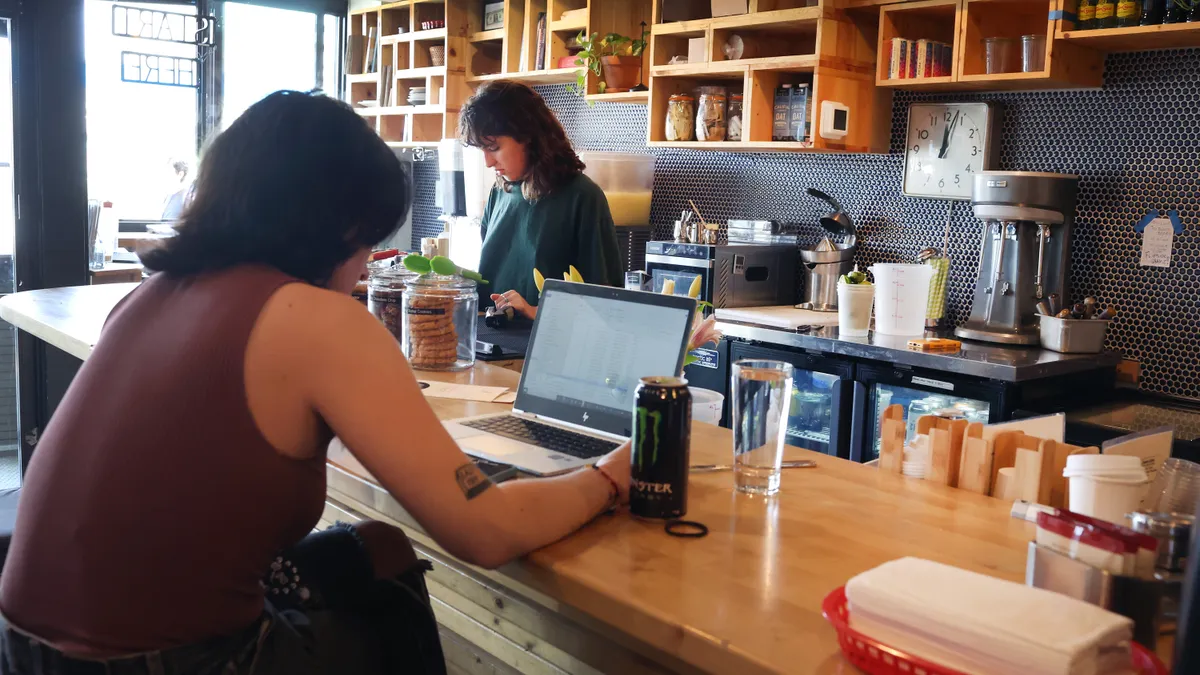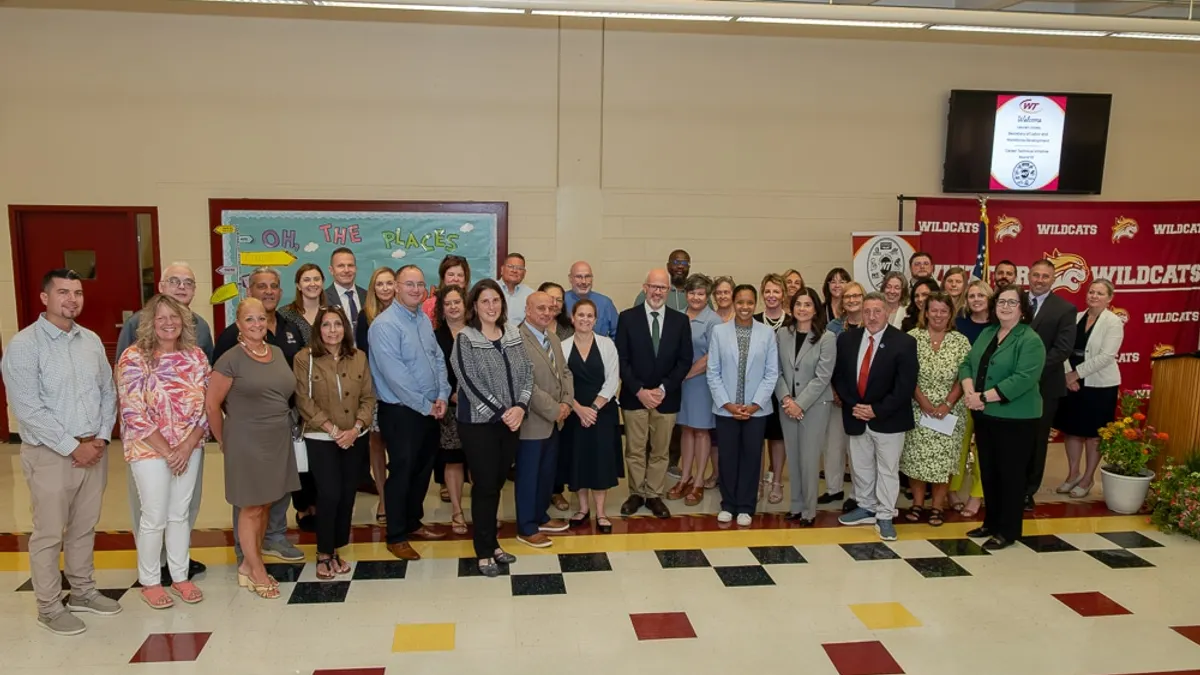Employees benefit from having a common experience during the learning process. This social interaction helps individuals digest new concepts and gives them an opportunity to learn from each other. Learning should always be looked at as an ongoing experience that connects new ideas and processes with real work tasks.
What is shared experiential learning?
In a work environment, shared or collaborative learning takes place when a group of employees is presented with a problem to solve. They must work together and focus on the complimentary skills each person brings to the table. This technique forges strong teams.
Eagle’s Flight, a training dev organization, uses experiential learning in their programming.
“Developing opportunities for colleagues across regions to have shared learning experiences creates a safe, common experience that continues to generate conversation and learning long after the event is over," Sue Wigston, Eagle's Flight's chief operating officer told HR Dive. "Current technology has made it possible to bring employees together to share in the learning."
To better understand the shared experiences value and how important this is to employee teams, HR Dive spoke with Augusto Giacoman, director at Strategy&, part of the PwC network.
“Shared experiences are important for anyone that wants to form a high-performing team, fast," he said.
First, shared experiences allow people to learn each other’s norms, working habits, emotional cues etc. This helps build the team’s EQ, which research done by Hillary Elfenbein and others suggests improves team performance. Second, it helps you get through the “forming, storming, norming” period (described by Bruce Tuckman in the 1960s) much faster.
“Anecdotally, in my personal experience once you have shared experiences you bond as a team and are able to work faster and better together,” Giacoman added.
What kind of experiences can achieve the goals that learning creates?
An experience needs to combine two things to achieve positive outcomes: meaning and stress.
"On one end, light meaning, light stress events, such as a happy hour, are a start and achieve small increases in bonding," Giacoman said. "On the other, formative activities, those with high stress and high meaning like boot camp, achieve exponential affects.”
On his teams, he starts with social activities like happy hours to gauge how open the team is to events, understand how the personalities work together and get a sense of who everyone is before making decisions from there. Other ideas can include: team dinners, intense workout classes, improv class and volunteering events.
On the Eagle’s Flight blog, Sue Wigston shares several ideas for making shared experience events more successful. She recommends connecting employees over the corporate culture, along with using ice breakers to get over any awkwardness that may come from not knowing certain people in training sessions.
What kind of experiences don't achieve strong teams in the learning mode?
Giacoman told HR Dive, “Simply, activities that are high stress with very little meaning – in other words, hazing.”
Prior to consulting, Giacoman was in the Army and experienced his own slew of "bad shared experiences" that resulted in little more than stress and, in worst cases, degradation. Not an example employers want to follow. Instead, experiential learning should lean on positivity and bond-building.
Experiential learning must also be ongoing in most cases, according to Giacoman.
“It depends on the intensity of the experience," he added. "If we take something like combat, you only have to experience that once with a group of people to have a bond that lasts forever. For most, though, you should think about shared experiences like a tool to improve team performance. Assess where the team is and how well they are bonded. If they are new, you may want to do something every week or every other week. As the team gets to know each other you can decrease the frequency.”
What about teams that are remote or working virtually from one another? How does experiential learning take place?
HR Dive spoke with Alex Howland, Ph.D. organizational psychologist and CEO of VirBELA, a social virtual reality platform for learning. Howland told HR Dive, “A great advantage of social virtual reality is that the software has spatialized voice, so learners can meet in dynamic groups (small, medium, large). This makes for much more participatory learning, rather than just listening to a subject matter expert on a webinar, or the like."
Participants also have greater autonomy to go where they would like, access the information they need, and speak to the folks they need to speak to. Water cooler talk is "more possible," as everyone in the organization shares a virtual campus. People may "run into" each other in common areas on their way to a private meeting.
Jen Spencer, VP of Sales and Marketing for SmartBug Media, an inbound growth marketing agency, shared ideas about achieving better shared learning experiences with teams split among various offices or working remotely.
Their employees are 100% remote and located throughout the country. That means putting priority on organizational alignment, strong communication tools and forums for team members to collaborate with each other.
"For any remote organization, executive leadership must cast a vision and create sustainable processes for communication so that technologies like video conferencing, instant messaging, company intranets and collaboration portals aren’t just wasted bits and bytes," Spencer added.
Al Riles, Principal Consultant at Tunnell Consulting, a firm that designs and implements sustainable solutions that improve the operating performance of companies in the health science industry, recommends the use of various software applications that focus on virtual learning. Shared learning with remote employees and teams can be arranged through “Go To Meeting” or a “Webex” (online meetings, desktop sharing and video conferencing). They allow participants to access information on a topic via the internet.
But one of the challenges of virtual learning is keeping employees engaged and connected with other team members.
“Some ways to improve results with experiential learning include making sure participants receive training material prior to each session. They are asked to review it and prepare questions," Riles said. "During the session, participants share previous experiences and lessons learned. In most instances, the information sharing results in robust discussions.”
When companies embrace methods of learning in a positive and supportive environment, employees are better able to then take this newfound knowledge to their daily tasks. Experiential learning is a time-tested way of building teams and honoring the unique traits every employee possesses.



















